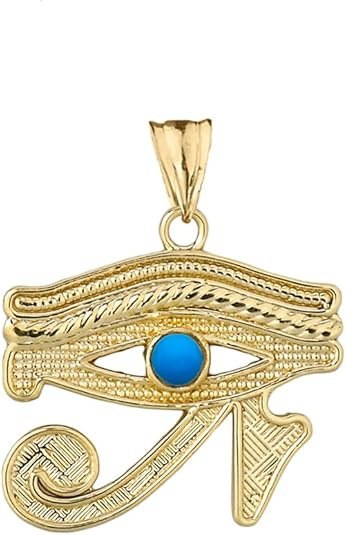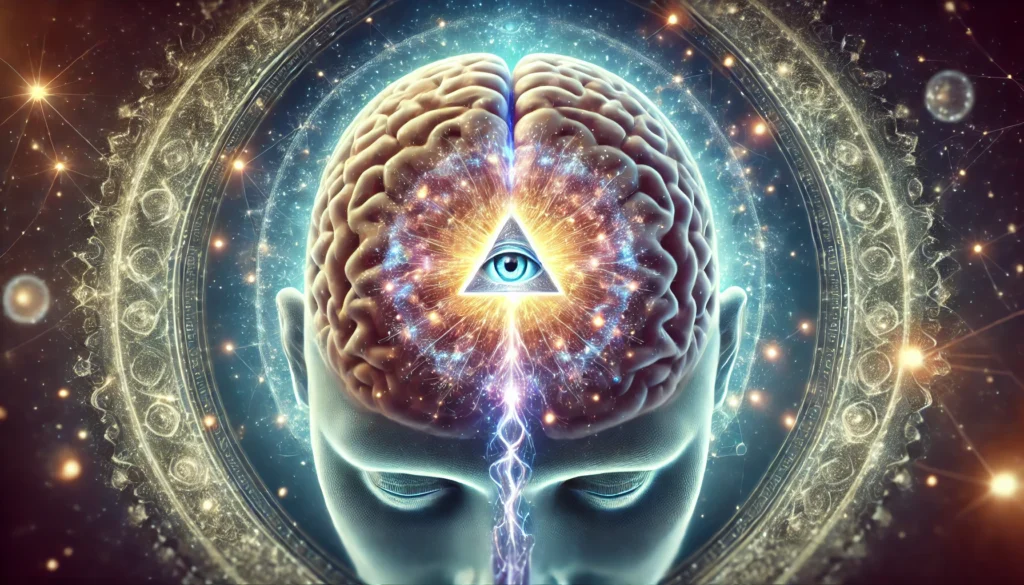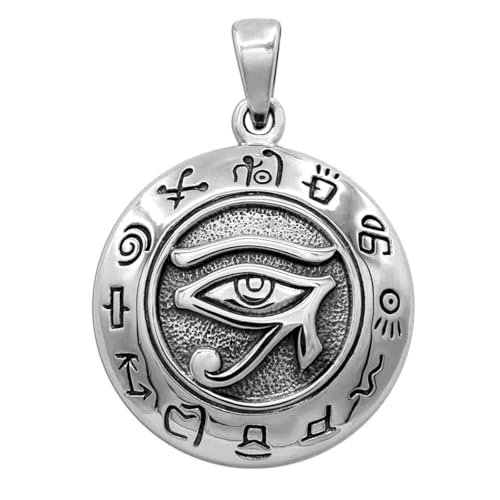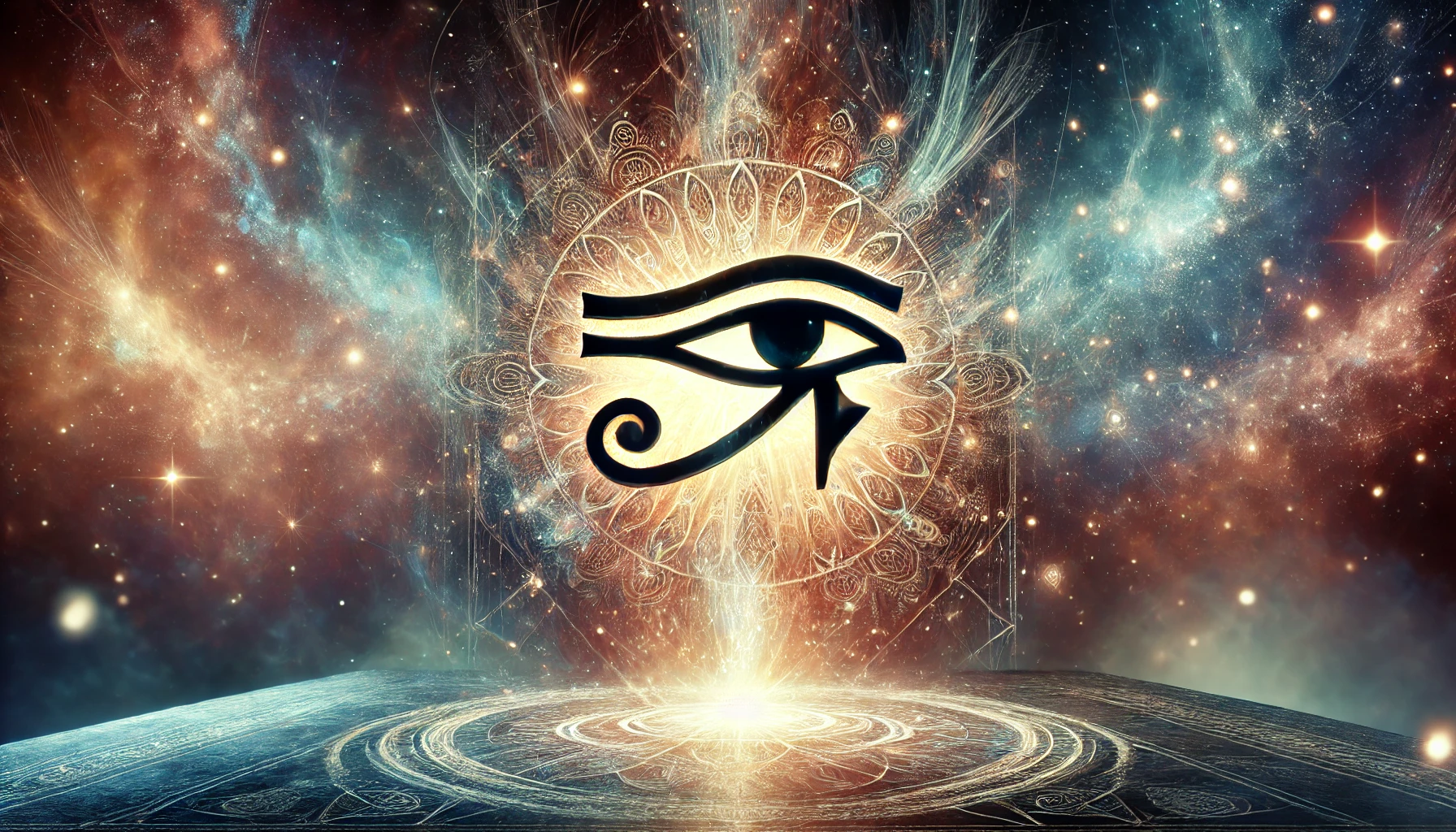Eye of Horus and Pineal Gland Introduction
Table of Contents
Explore the deep connection between the Eye of Horus And Pineal Gland in this insightful article. Discover the ancient symbolism of the Eye of Horus meaning spiritual and its link to the third eye, spiritual awakening, and the mysteries of human consciousness. Uncover how modern science and esoteric wisdom converge in the pursuit of higher awareness and enlightenment.
The ancient Egyptian symbol of the Eye of Horus has captivated the human imagination for thousands of years. This symbol, also known as the “All-Seeing Eye,” is often associated with protection, healing, and spiritual insight. It is one of the most widely recognized symbols in ancient Egyptian culture and continues to hold significance in various spiritual and mystical traditions to this day. In modern times, the Eye of Horus has also been linked to the pineal gland, a small endocrine gland located in the brain, often referred to as the “third eye.”
This article will explore the connection between the Eye of Horus And Pineal Gland, shedding light on the historical and spiritual meanings behind the symbol and its link to the pineal gland. We will dive into the esoteric, symbolic, and scientific aspects of these fascinating topics, seeking to uncover how ancient wisdom and modern science intersect when it comes to the Eye of Horus meaning spiritual and the role of the pineal gland in human consciousness.
Eye Of Horus Gold Pendant -Unlock Ancient Power with the Eye of Horus

The Eye of Horus: An Ancient Egyptian Symbol
Historical Background
The Eye of Horus is an ancient Egyptian symbol that represents the right eye of the falcon-headed god Horus. In Egyptian mythology, Horus was the god of the sky, the protector of kingship, and a symbol of divine power. According to myth, Horus lost his eye in a battle with his uncle Set, the god of chaos and disorder. However, Horus’s eye was restored by the god Thoth, the deity of wisdom and writing. This restoration of Horus’s eye symbolizes healing, wholeness, and protection.
The Eye of Horus is composed of several distinct parts, each of which carries its own symbolic meaning. The central part of the eye, resembling a human eye, is often called the “wedjat” or “Ujat”. The other parts of the eye, including the eyebrow and markings around the eye, are symbolic of various aspects of Horus’s strength, vision, and divine protection. The symbol has been used extensively in Egyptian art and jewelry, often placed on amulets and protective charms to ward off evil and bring healing.
Symbolism of the Eye of Horus
The Eye of Horus represents many things in ancient Egyptian culture. First and foremost, it is a symbol of protection and healing. In ancient Egypt, people believed that wearing an amulet of the Eye of Horus would protect them from harm and bring them good health. The symbol is often associated with the concept of wholeness, as it represents the restoration of Horus’s eye after it was damaged in battle. As such, it signifies the return of vitality, health, and completeness.
In addition to protection and healing, the Eye of Horus is also seen as a symbol of spiritual insight. It is often depicted as an all-seeing eye, symbolizing the ability to perceive the world beyond the physical realm and gain deeper knowledge of the spiritual dimensions of existence. The Eye of Horus is thus a powerful symbol of divine vision and enlightenment, and it has been used by mystics and spiritual seekers throughout history to represent their quest for higher knowledge and spiritual awakening.
The Pineal Gland: The Third Eye
Scientific Overview of the Pineal Gland
The pineal gland is a small, pea-shaped endocrine gland located deep within the brain, near the center of the head. It is positioned between the two hemispheres of the brain, just above the brainstem, and is often referred to as the “third eye.” The pineal gland is responsible for producing the hormone melatonin, which regulates sleep-wake cycles and plays a role in maintaining the body’s internal clock.
In addition to its role in regulating sleep patterns, the pineal gland has been the subject of much speculation and mystery throughout history. Many ancient cultures, including the Egyptians, associated the pineal gland with mystical and spiritual experiences, believing that it was the seat of consciousness and the gateway to higher states of awareness. This connection between the pineal gland and spiritual insight has led to the modern-day association of the pineal gland with the third eye and the exploration of its potential role in human consciousness.
The Pineal Gland and Spirituality
While the scientific understanding of the pineal gland is rooted in its physiological functions, many spiritual traditions have linked the pineal gland to metaphysical concepts, such as the third eye and higher consciousness. In Hinduism, the concept of the third eye is associated with the ajna chakra, one of the seven primary energy centers in the body. The ajna chakra is said to be the center of intuition, spiritual perception, and psychic abilities, and it is believed to be located at the point between the eyebrows, where the pineal gland resides.
Similarly, in ancient Egyptian spirituality, the Eye of Horus was seen as a symbol of spiritual awakening and insight, and it was believed to be connected to the pineal gland. The Eye of Horus And Pineal Gland connection can be understood through the lens of both ancient wisdom and modern metaphysical thought, as both are associated with the ability to perceive hidden truths, transcend the material world, and access higher states of consciousness.

The Role of the Pineal Gland in Spiritual Practices
The pineal gland has long been regarded as a gateway to higher consciousness and spiritual awareness. In many spiritual traditions, it is believed that the activation or opening of the pineal gland can lead to profound spiritual experiences, such as enlightenment, visions, and a deeper connection to the divine.
One of the most well-known practices associated with the activation of the pineal gland is meditation. Various forms of meditation, especially those that focus on the third eye or ajna chakra, are believed to stimulate the pineal gland and open the pathways to spiritual insight. Practices such as yoga, breathwork, and visualization are often used to enhance the functioning of the pineal gland and facilitate a deeper connection to the spiritual realm.
In addition to meditation, the use of certain substances, such as psychedelics, has been linked to the activation of the pineal gland and the induction of mystical experiences. These substances, particularly DMT (dimethyltryptamine), a powerful psychoactive compound that is naturally produced by the pineal gland, are believed to facilitate altered states of consciousness and provide access to higher dimensions of reality.
Eye of Horus and Pineal Gland: A Symbolic Connection
The Eye of Horus as the “Third Eye”
The symbolism of the Eye of Horus is often interpreted as representing the third eye, a concept that is deeply rooted in both ancient Egyptian spirituality and modern esoteric teachings. The third eye is commonly associated with the pineal gland, and the symbolism of the Eye of Horus is thought to represent the activation or opening of this gland, leading to heightened spiritual awareness and intuitive insight.
The Eye of Horus And Pineal Gland share common attributes, particularly their association with vision and perception beyond the physical realm. While the Eye of Horus symbolizes divine sight and the ability to perceive hidden truths, the pineal gland is thought to be the physiological organ responsible for our higher spiritual vision. The connection between the two is seen as a bridge between ancient wisdom and modern science, where the symbolism of the Eye of Horus serves as a metaphor for the opening of the third eye or the activation of the pineal gland.
The Spiritual Meaning of the Eye of Horus
The Eye of Horus And Pineal Gland is rooted in the concept of divine protection and insight. In ancient Egypt, the Eye of Horus was often used in rituals and ceremonies to invoke spiritual protection and healing. The symbol was believed to possess mystical powers that could safeguard individuals from harm and bring them closer to the divine.
When viewed through the lens of modern spirituality, the Eye of Horus can be seen as a symbol of awakening and enlightenment. It represents the opening of one’s inner vision, the ability to see beyond the material world, and access higher realms of consciousness. This spiritual interpretation of the Eye of Horus aligns with the concept of the third eye and the role of the pineal gland in spiritual awakening.
The Intersection of Ancient Wisdom and Modern Science
The connection between the Eye of Horus and pineal gland highlights the intersection of ancient wisdom and modern science. While the Eye of Horus is an ancient symbol with deep spiritual significance, the pineal gland is a physical organ that plays a crucial role in regulating human consciousness. Both the Eye of Horus and the pineal gland are associated with perception beyond the ordinary senses and the ability to access higher planes of reality.
In modern spiritual practices, the activation of the pineal gland is often seen as a means of achieving spiritual enlightenment, and the Eye of Horus serves as a powerful symbol of this process. Whether viewed from a scientific or spiritual perspective, the connection between the Eye of Horus and pineal gland invites us to explore the mysteries of consciousness and the potential for human transformation.

Conclusion
The Eye of Horus And Pineal Gland are connected by their shared symbolism of heightened vision, spiritual insight, and the quest for higher knowledge. The Eye of Horus meaning spiritual encompasses themes of protection, healing, and divine perception, while the pineal gland is seen as the physiological counterpart to the spiritual “third eye.” Through ancient Egyptian symbolism and modern scientific understanding, we can explore the profound mysteries of consciousness and the potential for human awakening. Whether through meditation, spiritual practice, or the study of esoteric traditions, the Eye of Horus and pineal gland offer a pathway to deeper understanding and connection to the divine.

